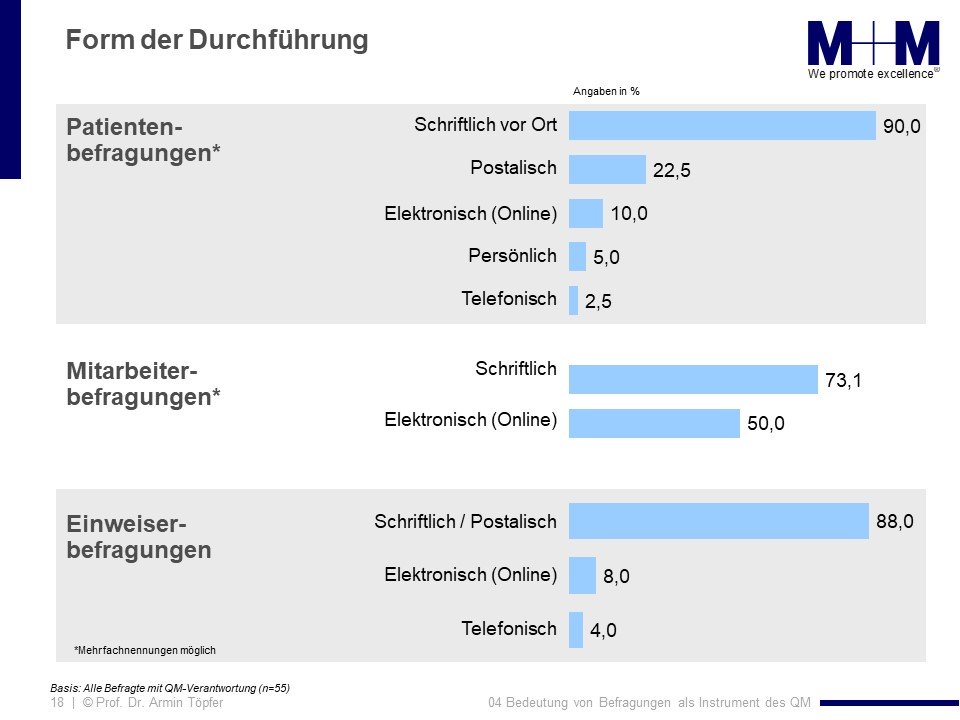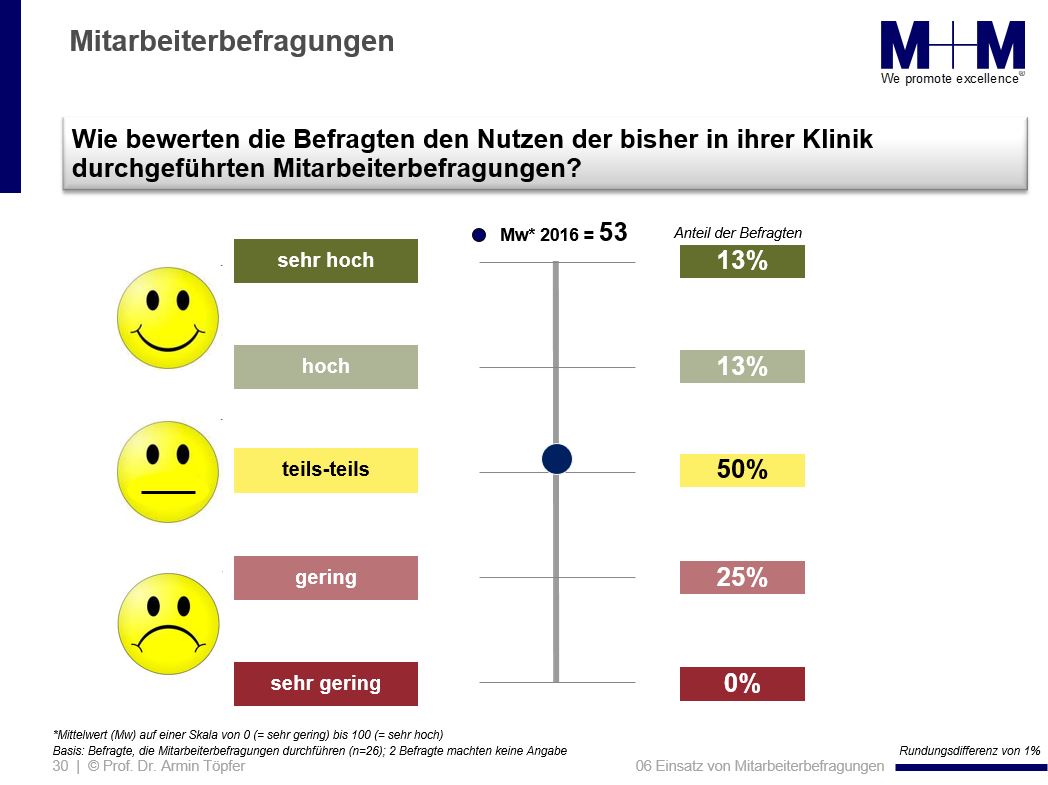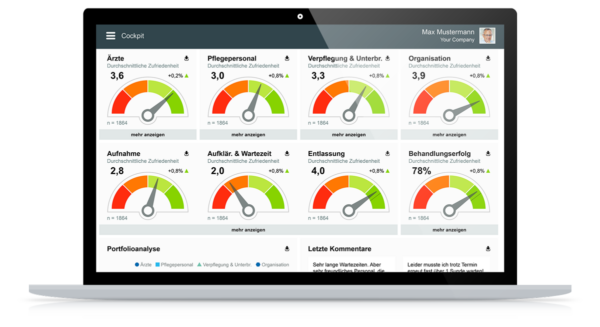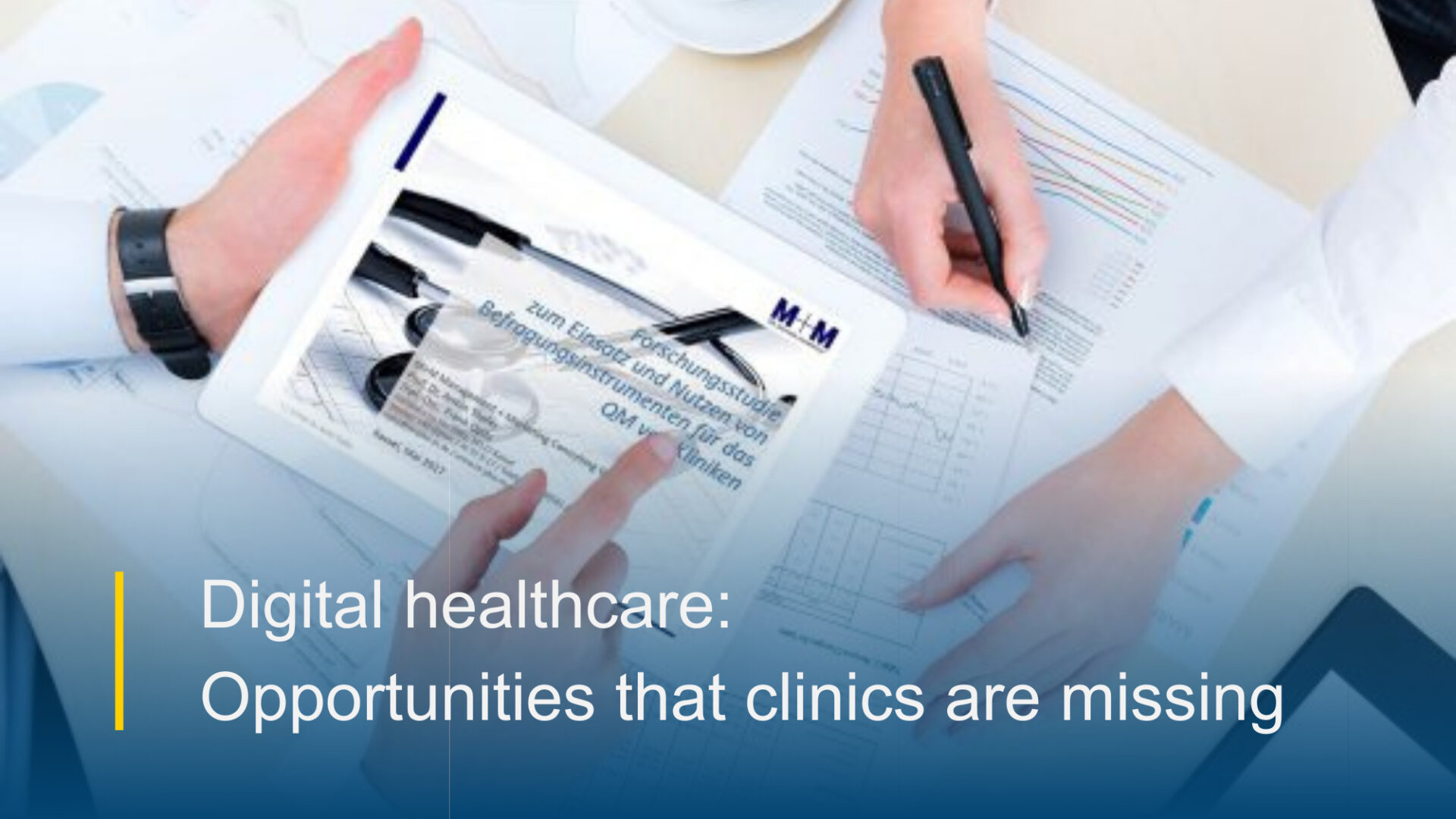Digital healthcare, why is it so important?
Hardly any healthcare congress today can avoid the topic of digital healthcare. As a recent study by management consultants Roland Berger shows, 90% of hospital managers now have a digitization strategy.
However, a scientific study which Spectos commissioned from M+M Management + Marketing Consulting GmbH proves that healthcare facilities are still at the beginning of this process in various aspects. Specifically, the study focused on the use and benefits of surveying methods for quality management in hospitals. For this purpose, QM managers, clinic/hospital directors and chief physicians were consulted.
How common are certification and quality management?
Quality management systems and certifications are now standard in almost all hospitals, with most survey respondents working on the basis of DIN EN ISO 9001. KTQ, EFQM and Six Sigma, for example, are used less frequently. However, only 40% of respondents agree that QM has a good cost-benefit ratio. Roughly 80% of the study participants thus see great potential for optimizing existing processes/operations.
Satisfaction surveys: Good intentions, poor execution
According to the study, patients are surveyed most frequently in hospitals. Around 80% of facilities conduct patient surveys, and mostly as part of quality management. Only one-tenth of these surveys are conducted electronically or online. On the other hand, employee surveys are used by only about half of the hospitals, with often several years between surveys. As a result, employee surveys are conducted only every 1 or 2 years at 39% of the facilities, and even less frequently or never at the others. These gaps are problematic given that there is a high fluctuation of staff in some departments.
As a consequence, the opinions of dissatisfied employees sometimes do not appear at all in the statistical evaluations. But how can the hospital management react to weak points in time, if the employee already quits in advance? The same applies to the referrer surveys. In 36% of cases, these take place every 1 to 2 years as well. For the remaining 54% even less frequently, or never. Ironically, most hospital managers and chief physicians consider these surveys important, especially for identifying strengths and weaknesses in teamwork and as a basis for improvement measures.

Digital healthcare still has a long way to go: The statistic on currently utilised survey channels shows the differences in conducting patient, staff and referrer surveys in this order. The result: In each category, the paper-based methods are still far superior.
Criticism of existing surveys in the hospital
Why do healthcare providers have such a hard time with the frequency or general use of satisfaction surveys in hospitals? The main reasons cited for the lack of action are primarily a low perception of value and usefulness, time constraints, and lack of acceptance. Current survey methods mainly rely on paper-and-pencil procedures. The respondents stated the following as the biggest deficits: too much personnel effort, poor cause recognition from detailed results, and the lack of a quick response option to criticism. Thus, the participants rated the overall benefit of surveys in hospitals as only mediocre.

Lack of digital healthcare in hospitals? Study on the benefits of employee surveys of previously conducted survey methods. This is how the participants rated the effectiveness of the employee surveys conducted in their clinics so far.
The high effort involved in manual evaluations is reflected, for example, in benchmark comparisons. Almost three quarters of the hospitals surveyed use the survey results for this purpose. The challenge: After each survey, the third-party data and the clinics’ own measurements have to be merged manually in Excel/Powerpoint in order to be able to compare them vividly.
Cause-effect relationships between patient, referrer and employee surveys can only be displayed in this way with great effort and are very time-consuming. Yet 93% of the QM managers and 82% of the clinic and hospital managers/chief physicians surveyed consider such comparisons to be important. However, such analyses can only be executed fully by a small proportion (33%). Where this happens, concrete improvement measures are derived from the results comprehensively or to a large extent (56%).
What does digital healthcare enable for surveys?
As shown, traditional surveys of patients, employees and referring physicians have significant drawbacks. When it comes to surveys, executives primarily want low personnel costs, appealing and comprehensible results processing with detailed analysis options, and the ability to respond quickly to criticism and problems. The last point in particular can only be achieved with high effort when doing traditional satisfaction surveys.Due to technological advances, it is much easier to reach your respondents nowadays. Spectos Healthcare – a solution for all healthcare providers – demonstrates this with the use of multiple communication channels, including email, SMS, WhatsApp, tablet, terminal, QR code and shortlink. However, also telephone surveys (CATI) or paper questionnaires can still be used. They are captured digitally and presented centralized in our Healthcare Cockpit.

The Healthcare Cockpit shows exact measurement results of the satisfaction indicators and that in real time
The Cockpit can be accessed via browser from any computer, tablet or smartphone and visualizes individual and clear graphics from the collected data. The difference to previous methods is that the collected information is available in real time – in other words, without any time delay. It can be conducted permanently, for example with patients, or in much shorter cycles with employees and referring physicians. This provides a continuous supply of up-to-date and high-quality data, which is a real help for hospital managements. This way, important non-monetary performance indicators can also be collected for the balanced-scorecard.
In addition, the personnel costs for a detailed evaluation are significantly reduced doing so. With the integrated healthcare complaint management (ticket system), it is also possible to react promptly to criticism. Furthermore, a real-time measurement system offers additional advantages, such as automated reports, alerts when quality values drop, and showing cause-and-effect relationships between patient, referrer and employee surveys.
Worried about surveying too often?
To ensure that high-quality survey data is continuously received and that respondents do not react “annoyed,” market researchers use various “tricks.” For example, real-time measurement systems such as Spectos Healthcare prioritize event-related questions, such as “How satisfied are you overall with your last hospital stay?” or “Has the working atmosphere improved positively after the introduction of the new hospital mission statement?”
Another approach for more and permanent feedback is shorter and clearer questionnaires (online/offline). For this reason, it is generally advisable not to query all aspects permanently, but rather only the relevant points depending on the season or event, for example.
In conclusion: Going digital in healthcare makes great sense – but if you’re doing it, do it right!
Are hospitals missing out on opportunities for digitization? The study results make one thing clear: When it comes to surveys in hospitals, there is a yawning gap between what executives and decision-makers hope to get out of surveys and what previous, traditional methods of market research delivered. Real-time measurement systems can permanently collect and process data via classic and modern media. They close this gap and enable much more efficient methods, such as continuous surveys. On the one hand, this hybrid approach improves quality management, and provides managements with an extremely helpful tool. The satisfaction of patients, staff and referring physicians can be measured, evaluated and controlled in every department and for every location. Ultimately, the satisfaction of the various stakeholders is always the basis for economic success.
Interested in a case study after all that theory?
Our Case Study with the AMEOS Group
Follow us on LinkedIn for updates on events, publications, case studies and news!


